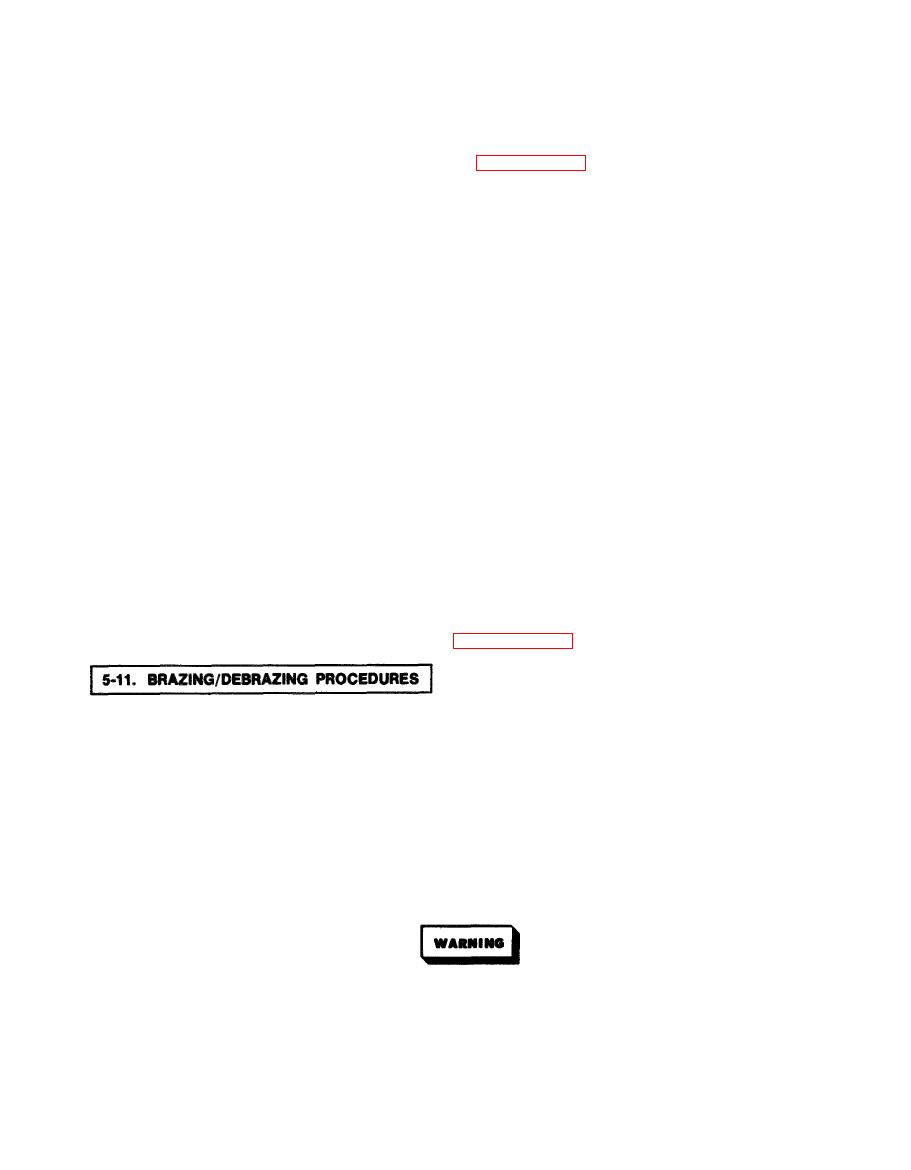 |
|||
|
|
|||
|
|
|||
| ||||||||||
|
|
 TM5-4120-347-14
a. See specific component removal instructions. It may be necessary to remove the top rear cover prior to
connecting hoses to the service valves.
b. Be sure that refrigerant has been discharged. See paragraph 5-9.
c. Connect the center hose from the charging manifold to a nitrogen regulator and dry nitrogen bottle.
d. The hose from the high pressure charging valve to the charging manifold should be connected.
e. The hose from the low pressure charging valve should be disconnected from the charging manifold.
f. Open both charging valves on the unit.
g. Close the unused valve on the charging manifold and open the one with the nitrogen tank hook up.
h. Own the nitrogen cylinder valve and adjust the regulator so that approximately 1-2 cfm (0.28-0.057
3
m /minute) of nitrogen flows through the system.
i. Check discharge from hose attached to the low pressure charging hose to be sure that no oil is being
forced out of the system.
j. Allow nitrogen to Sweep through the system at the rate of 1-2 cfm (0.028-0.057 m3/minute) for a minimum
of 5 minutes before starting any brazing operation, then allow it to continue to flow at the same rate until all
brazing operations are completed.
k. After installation brazing operations are completed, allow nitrogen to flow for a minimum of 5 minutes.
l. Close nitrogen cylinder valve, nitrogen regulator, charging manifold valve and both high and low
pressure charging valves on the unit.
m. Disconnect the hose from the nitrogen tank.
n. Assuming that all repairs are completed, go to paragraph 5-12.
a. General. All tubing in the refrigeration system is seamless copper with a bright internal finish that
permits thorough cleaning and prevents entrapment of moisture or other impurities. Rigid grade copper is used
for straight sections and soft grade for sections that must be bent. All interconnecting fittings, such as elbows,
trees, etc., are also copper. The bodies of all valves and all connectors on other components are brass. All
joints, except those provided with flare fittings, are made by brazing in accordance with MIL-B-7883, except
that radiographic examination is not required.
b. Filler Alloy. Grade IV or VI brazing alloy and Type B flux, as specified in MIL-B-7883, must be used for all
copper to brass joints. Grade Ill brazing alloy may be substituted for Grade IV or VI for copper to copper joints;
flux is not required for copper to copper joints.
c. Debrazing. Debraze joints for removal of refrigeration system components as follows:
All Refrigerant-22 must be discharged from the system and the entire system must be purged with dry
nitrogen before beginning any debrazing operation.
(1) Determine which joints are to be debrazed. Due to the limited work space inside the air conditioner, it
may be more convenient to remove a part of the interconnecting tubing with the component rather than
debrazing the joints on the component itself.
5-9
|
|
Privacy Statement - Press Release - Copyright Information. - Contact Us |